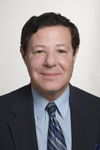In a recent American Society for Dermatologic Surgery survey of nearly nine hundred women conducted to determine what makes people comfortable about cosmetic surgery, it was learned that safety, minimal invasiveness, quick recovery, few side effects and convenience were some of the more important concerns. Somewhat surprisingly, degree of improvement ranked lowest on the list, with fewer than 10% of the respondents expressing significant concern about this. This may explain the allure of microdermabrasion to the consumer and the rapid rise within less than five years in demand for this technique, which has become one of the most commonly performed cosmetic procedures.
While the machines may be new, the concept isn’t. Prior to its relatively recent introduction in the United States, microdermabrasion had been used in Europe for many years. The procedure is essentially one of buffing, polishing or gently “sanding” the skin with a rough material in order to clean away environmental contaminants and dead skin cells and to promote faster skin cellular turnover. The design of all current machines is simple, too: ultrafine particles, usually aluminum oxide crystals or occasionally microfine salt crystals are blasted through a delicate handpiece held at an angle to the skin and then almost as quickly vacuumed back into the handpiece along with the resultant skin debris. Through this means a mild, superficial dermabrasion of the skin is performed, or what in most cases might be more accurately described as an “epidermabrasion” since only the epidermis, the uppermost layer of the skin is affected. The technique itself is often also referred to by some of the more popular brand name devices marketed for this purpose, eg. The Parisian Peel®, The Power Peel®, and Dermapeel.®
Uses of Microdermabrasion
Conventional microdermabrasion is a non-surgical, non-invasive approach, which may best be thought of as a skin exfoliating, freshening or conditioning. Primarily intended for removing accumulations of dead skin cells, reducing skin flaking and enlarged pores, adding luster to dull skin, lightening brown spots and promoting the production of fresh young skin cells, microdermabrasion in these regards may be compared to lunchtime peels with high concentrations of glycolic acid or beta hydroxyacids. Microdermabrasion has also been used to reduce stretch marks, soften the appearance of acne scarring, and as an adjunctive treatment for managing active acne. It has likewise been used as a means of maintenance after patients have undergone more aggressive procedures, such as facelifts, etc., in order to enhance or maintain the benefits of these procedures.
Softer, smoother, and more lustrous-looking skin may be appreciated even after one treatment, although results generally require a full series, particularly when used to treat acne, acne scarring or stretch marks. Repeated treatments may in fact also stimulate new collagen formation, perhaps accounting for the improvement in fine lines and for its benefits in stretch marks and acne scarring.
Best Candidates for Treatment
Because the technique is superficial and non-invasive it has been safely and successfully used in men and women of all ages, skin types and colors who are in good general health and possess adequate skin tone.
What To Expect
Price per treatment session varies, depending upon locale and the number of regions treated, and may range from $150-$250 per session for a face, $75-$100 for hands or neck, and $100 for a chest. A usual course of treatment consists of between six and twelve sessions, which may be spaced at weekly, biweekly or monthly intervals. A session lasts about twenty minutes for a full face and neck. However, stretch mark treatments may take up to two hours depending upon the surface area requiring work. After an initial series is completed, maintenance visits may be scheduled as needed, usually at two to three-month intervals.
Certain medications and food supplements may increase the possibility of bruising, so you should discuss with your doctor stopping them prior to treatment. These include aspirin, non-steroidal anti-inflammatory drugs (eg. Advil, Aleve), alcohol, vitamin E, ginseng and ginkgo Biloba.
Because of the possibility of reactivating the herpes virus infections patients with a history of herpes of the lips (“cold sores,” “fever blister”) should inform their doctors in advance. A short course of an antiviral drug, such as acyclovir, will usually prevent this complication.
While the majority of individuals experience little or no significant discomfort during or after treatment, occasionally some will complain of a feeling of being or having been rubbed with fine sandpaper. Topical anesthesia is seldom required. Immediately after treatments the skin is cleansed to remove debris and moisturized. Patients typically leave with a pinkish, healthy glow to their skin, and may apply makeup and return immediately to normal work or social activities. The regular use of sunscreens to protect treatment-sensitive skin is important.
Happily, owing to the superficial nature of the procedure, complications of routine microdermabrasion are rare. Scabs and crusting, which may take as much as a week to heal, may result when more aggressive microdermabrasion is attempted in order to deal with deeper acne scarring or stretch marks. Although the jury is not in yet in as to the precise role of microdermabrasion in the overall cosmetic practice armamentarium, it is certainly an appealing new peeling.
For a consultation or appointment, call us at (212) 772-9300.
